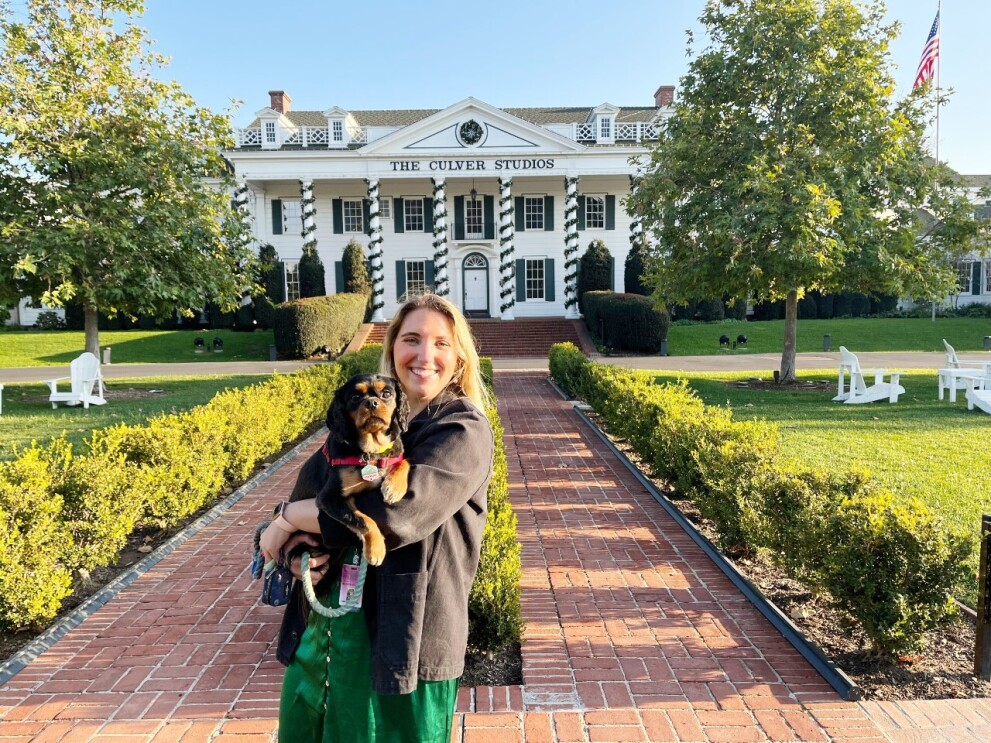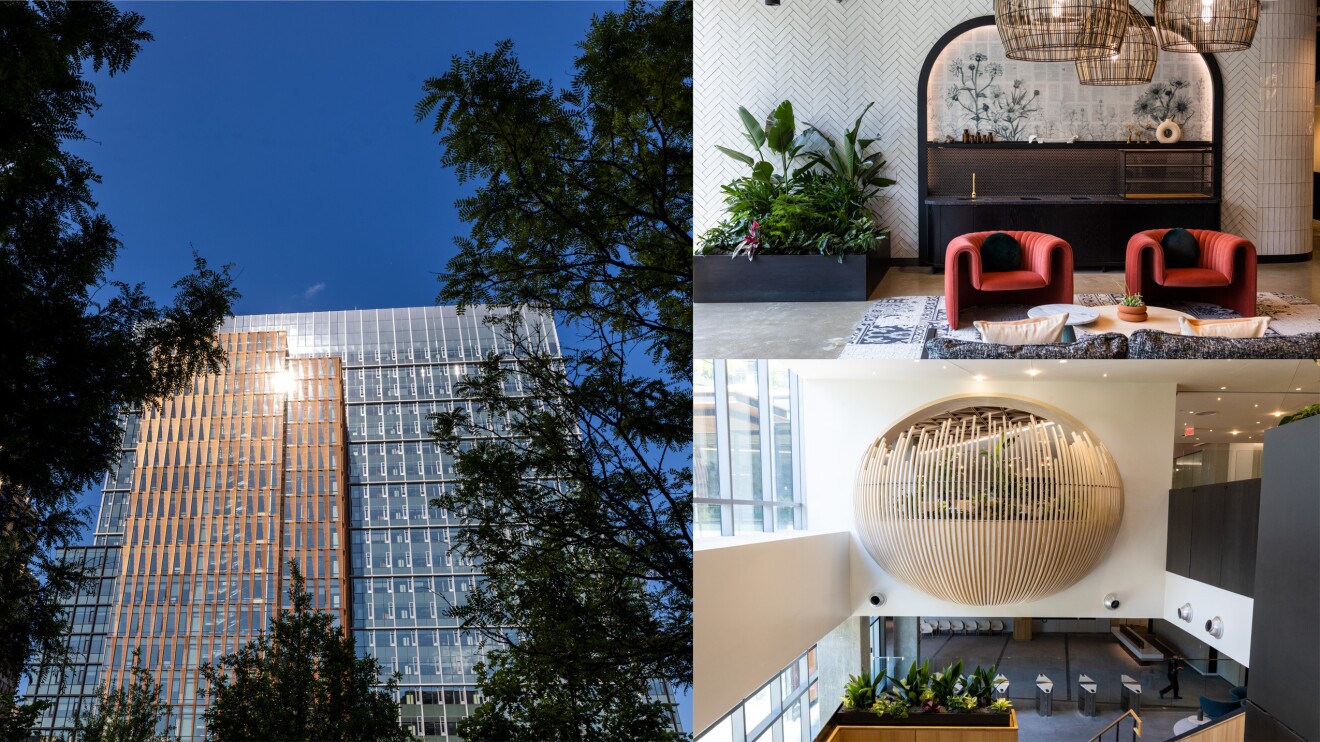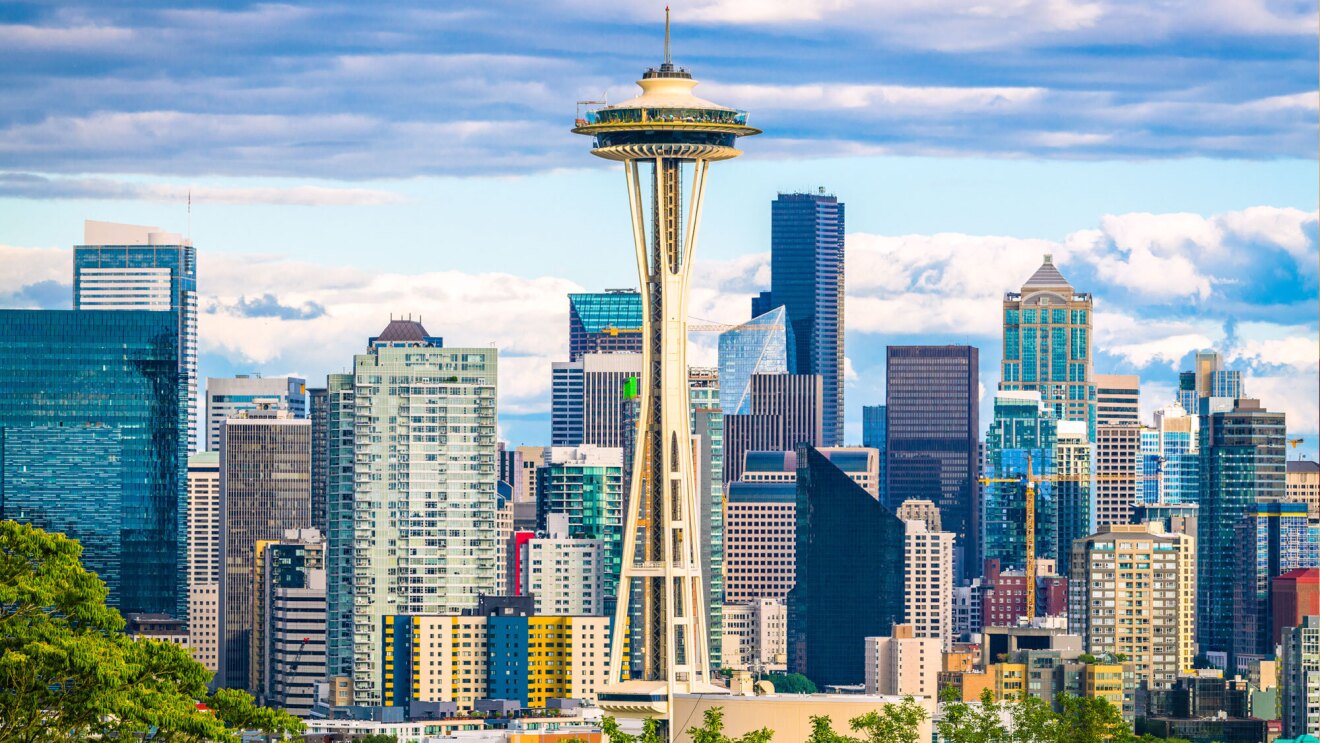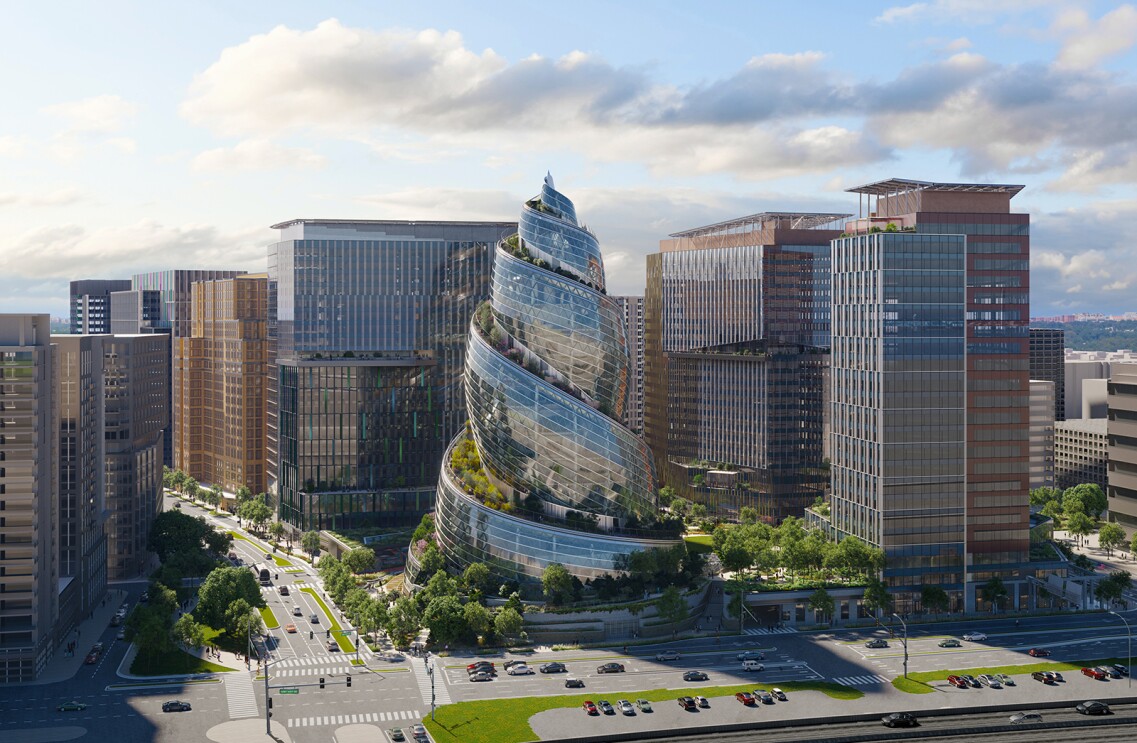Amazon’s second headquarters in Arlington, Virginia, features a 2.5-acre park that’s open to the public. Metropolitan Park offers serene walking paths, unique public art installations, a dog park, a children’s play area, and an active central green, all nestled inside a horticultural masterpiece partially inspired by the United States Botanic Garden in Washington, D.C.
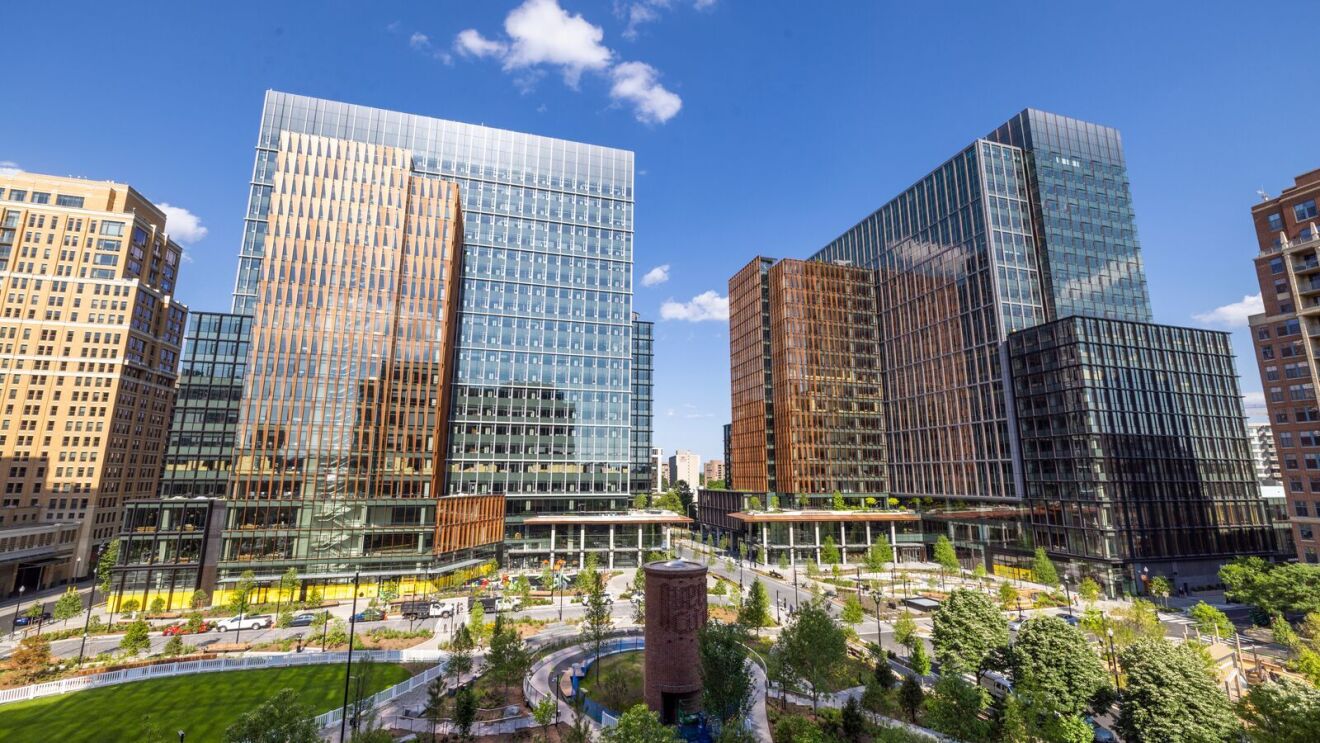
The park is home to more than 50,000 understory plants, 300 trees, and 160 native and native-adaptive species. Thanks to the coordinated work of the Amazon Horticulture team, landscape contractors, and landscape architecture firm James Corner Field Operations specialists like Bill McLaughlin, with input from the Arlington neighborhood, Amazon’s HQ2 naturalistic landscape is not only aesthetically beautiful but a masterpiece of sustainability in an urban setting.
HQ2 was built with sustainability at its core, a commitment that includes the campus’ public park. The talented staff members at HQ2 adjust planting techniques based on the most sustainable and beneficial options for the plants. The Horticulture team consults on new construction projects, post-occupancy care, and redesigns, to help plan, carry out, and transition important horticulture across its corporate sites around the world. Keep reading for a walkthrough of the unique design features and diverse plant species that call Metropolitan Park home.
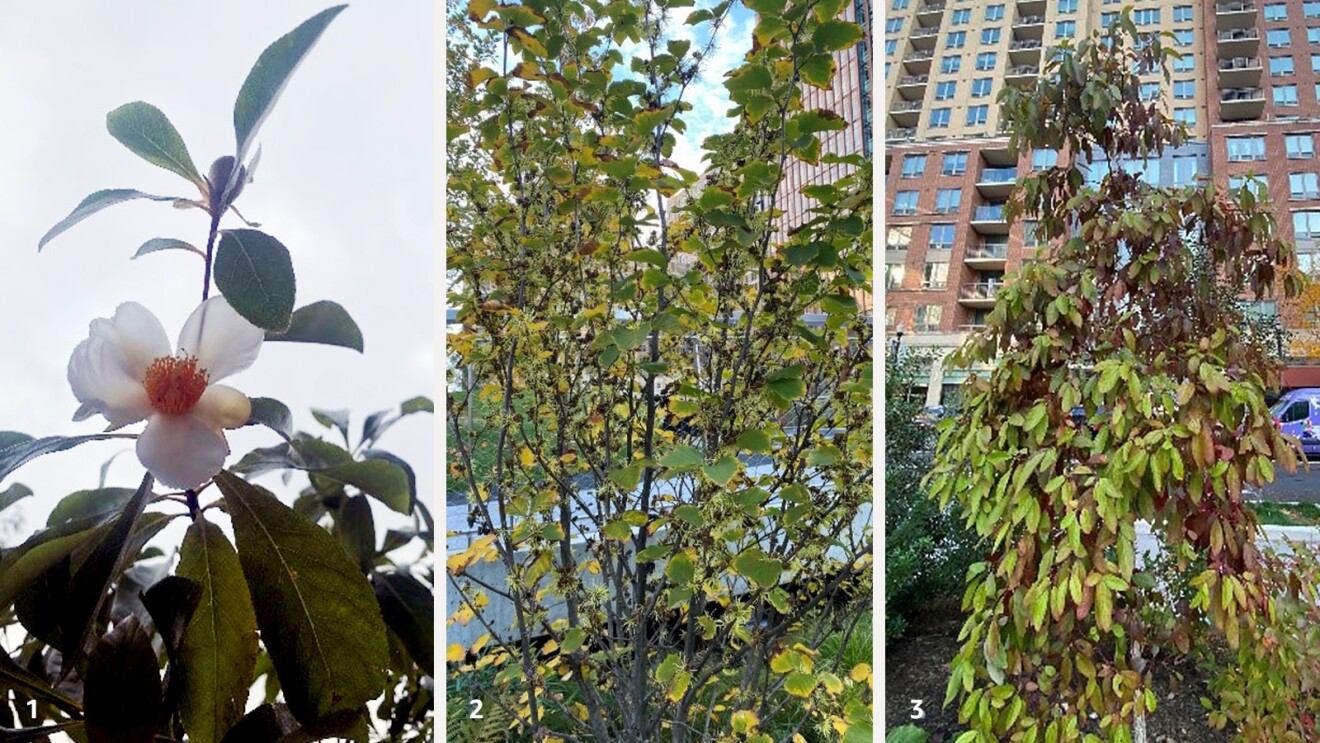 1. Franklin tree 2. American witch hazel 3. Sassafras tree.
1. Franklin tree 2. American witch hazel 3. Sassafras tree.Seven unique plants at Met Park
The Franklin tree (Franklinia alatamaha), named for Benjamin Franklin, is known for its brilliant autumn foliage and attractive flowers. Discovered in 1765 by Philadelphia botanists John Bartram and his son, William, the Franklin tree is part of the tea (Theaceae) family. William returned to Philadelphia repeatedly to collect seeds and plants. But since 1790, the tree has not been observed in the wild, possibly having suffered natural disasters, such as flooding, or been eradicated by bulk collection for shipment abroad.
American witch hazel (Hamamelis virginiana) can be drunk as a tea, applied topically, or used to wash out wounds. Due to its astringent properties, witch hazel helps to soothe skin, tighten and tone tissue, and lessen inflammation. The flowers have four thin, creamy-to-bright-yellow petals that bloom in mid- to late fall. On this unusual flowering schedule, the fragrant blossoms are the only source of color in the woods when the forest floor is covered in fallen autumn leaves. The stiff, tiny, tan-to-gray capsules remain dormant over the winter months. During the following growing season, they grow, and in the autumn, forcefully eject two lustrous black seeds, which are 10 to 20 feet long. After that, the seeds take another year to sprout. The shrub's forked limbs have an intriguing application as divining or dowsing rods. Early European settlers saw Native Americans searching for underground water supplies with American witch hazel.
Sassafras (Sassafras albidum) has remarkable qualities throughout the year. Early spring brings small aromatic yellow flowers into bloom, followed by bright green leaves in the summer and yellow, orange, or blazing red in the fall. Naming it "kvfi," "pauame," or "winauk," Indigenous peoples have traditionally used sassafras roots, wood, and bark. Early European explorers believed sassafras was the New World's wonder medicine. Dried and finely powdered sassafras leaves make up the Creole spice filé, which acts as a thickening agent and gives gumbo its distinct flavor. Chemicals released by sassafras roots have the potential to damage other plants in their root zone (allelopathic).
 4. Allegheny chinquapin 5. Persimmon tree 6. American hazelnut 7. Pawpaw
4. Allegheny chinquapin 5. Persimmon tree 6. American hazelnut 7. PawpawAllegheny chinquapin (Castanea pumila) is a native nut tree that grows from East Texas through Louisiana, Mississippi, and Alabama, through Florida and into the Carolinas. Allegheny chinquapins are closely related to the American chestnut. While chestnut blight, an imported fungal disease, all but eliminated the native American chestnut tree, Allegheny chinquapins persist in places within their native range. Encased in spiky husks, the nuts provide food for wildlife, from squirrels and deer to wild turkeys.
The persimmon tree (Diospyros virginiana) is native to the southeastern United States. Indeed, for centuries, the Indigenous peoples of this area have used persimmons for food—drying the fruit for storage or cooking it fresh—and beverages, such as a local beer. Persimmon was also traditionally used medicinally, either topically or ingested. Today, persimmon fruit is still enjoyed as an ingredient in baking. While fairly slow-growing, the persimmon tree can reach great heights and is easily grown from seed. Once it starts producing fruit, a persimmon provides food, shade, and fragrant flowers for people, animals, and birds. The unique flavor and texture of the persimmon fruit is appreciated in breads, custards, and puddings—and enjoyment of this fruit dates back hundreds of years to local Native American communities in the region. Traditionally, persimmons were dried in flattened cakes, sometimes with added cornmeal. Be warned though, eating astringent and unripe fruit is an unpleasant experience you won’t soon wish to repeat.
The American hazelnut (Corylus Americana), a member of the birch family, is native to North America, where it has been cultivated for centuries. The name comes from the Old English word for "filbert." The hazelnut is prized for its ornamental appearance, as well as providing an important food source. People eat the delicious, nutritious nuts raw or roasted, ground into flour, mixed with chocolate, or used for nut milk. Animals and birds eat them, too. The shrub also has botanical uses. In the warm seasons, it produces colorful flowers and long, dangling, pollen-bearing catkins. In the fall, the heart-shaped leaves turn bright yellow. The shrub is adaptable, too. Whether sunny or shady, in a forest or on a rocky hillside, cultivated or in the wild, hazelnuts can thrive.
The pawpaw (Asimina triloba) is the only local member of the large, mainly tropical plant family Annonaceae and produces the largest edible fruit native to North America. Technically, it's a berry, both highly nutritious and valuable in cancer therapies. Growing up to 20 feet tall, the pawpaw is found in Eastern North America and west to Texas. Like many trees in that region, it blooms in the spring and bears fruit in the fall. The bark naturally repels insects. The sweet, custardy fruit, as well as the tree's accommodating nature—water and mulch it, and it grows—have recently been making the pawpaw very popular. Yet, its popularity goes back centuries, as the tree was prized by Indigenous peoples, who used it as a food source and also as a source of raw materials, such as harvesting the bark to make rope. Animals from raccoons to squirrels eat the fruit, while the fragrant leaves are the only food source for Zebra Swallowtail butterflies.
Public art installations

Queen City by Nekisha Durrett (Washington, D.C.)
Standing tall and vigilant, Queen City confronts the 1941 seizure of Black-owned land by the federal government for the construction of the Pentagon. Within this work, 903 displaced residents of Queen City are represented by handmade ceramic vessels made in the shape and color of a drop of water.
In the spirit of collaboration, the artist commissioned Black ceramicists from the local area and beyond while working with historians, living descendants of Queen City residents, and local art spaces.
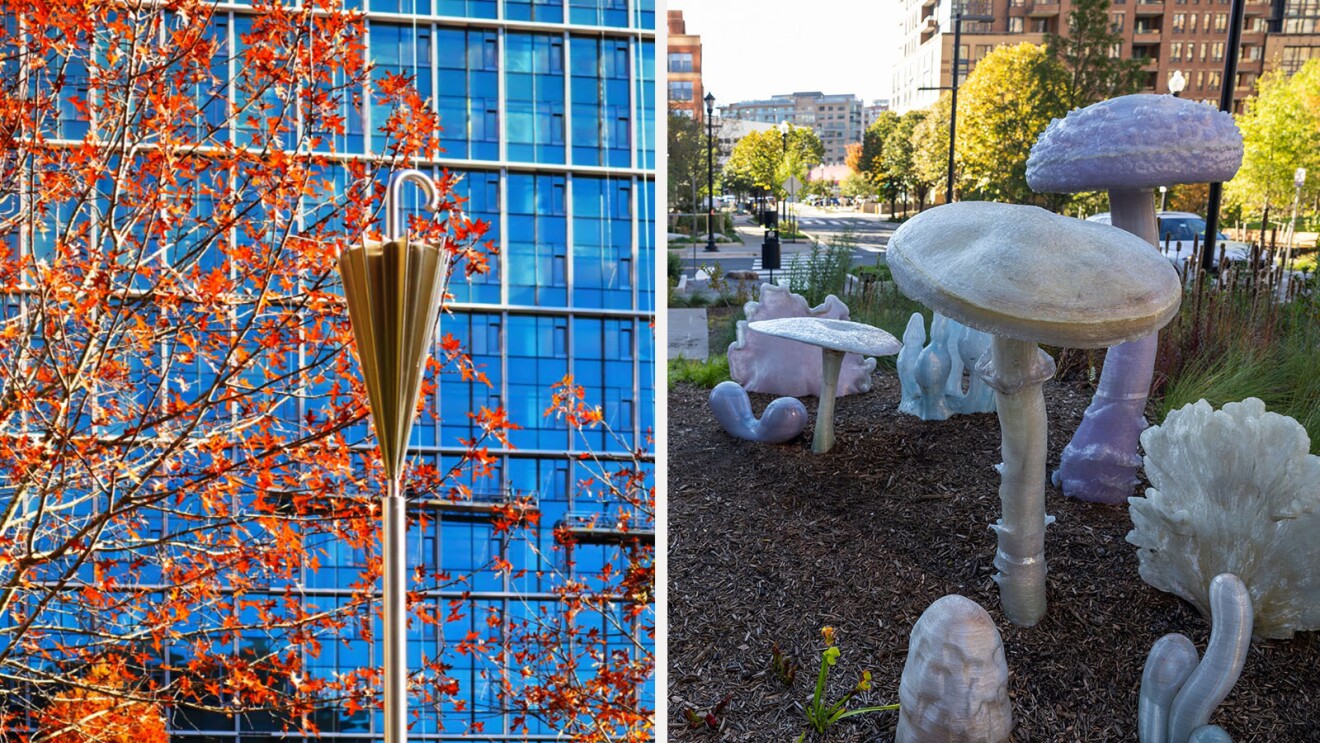 Public art at Amazon HQ2 entitled Untitled Perched Objects by Inigo Manglano-Ovalle (left) and Shhh by Aurora Robson (right).
Public art at Amazon HQ2 entitled Untitled Perched Objects by Inigo Manglano-Ovalle (left) and Shhh by Aurora Robson (right).Untitled Perched Objects by Inigo Manglano-Ovalle (Chicago, IL)
Untitled Perched Objects populates one’s journey along the forest path with a series of events. The assortment is familiar yet unexpected—a balancing umbrella; a telescope arrested mid-fall; a canted stool with a mug peering over its seat; a bird house perched on its own perch with dangling binoculars, and a disposable cup with its lid and straw weighted by its contents. They invite the viewer to consider all the objects that surround us, those overlooked and those that may hold our focus. Each is a part of the everyday and yet extraordinary, recognizable, and inexplicable.
Shhh by Aurora Robson (New York, NY)
To create Shhh, the artist scanned both mushrooms and hand-sculpted forms then 3D-printed them with upcycled plastic. At night, each component responds to movement by glowing softly from within, reminiscent of the bioluminescent mushrooms found in nearby forests.
Shhh invites us to step out of everyday life to marvel at the incredible diversity of nature and the many things we often don’t see or hear, unless we are quietly paying attention. Visitors can scan a QR code near the installation to find out more about the kinds of mushrooms, their locations, and the creative fabrication method used to create the artwork.
Unique facts about Met Park
Our watering system
The majority of the park sits on top of concrete, and each soil type has been carefully engineered and positioned. To produce a realistic and impactful show, the team designed a bespoke drainage system and selected long-lasting soils. From powering buildings and lighting in the park by 100% renewable energy, to its biophilic design and deploying unique ways to conserve and reuse water both inside and outside of the buildings, HQ2 was built with sustainability at its core. The park’s irrigation system uses water reclaimed and recycled from various sources, such as showers and sinks, inside of Amazon’s Metropolitan Park buildings. The system also actively tracks precipitation, humidity, and temperature to know when water is needed and when it’s not, allowing the multiple zones to provide the trees and various plantings with a tailored amount of moisture. Combined with other water-saving measures in Amazon’s buildings, including low-flow fixtures and the recycled rainwater used to supply the buildings’ cooling towers, Metropolitan Park uses 50% less water than similar projects and will recycle 7.5 million gallons of water per year.
The majority of the park sits on top of concrete, and each soil type has been carefully engineered and positioned. To produce a realistic and impactful show, the team designed a bespoke drainage system and selected long-lasting soils. From powering buildings and lighting in the park by 100% renewable energy, to its biophilic design and deploying unique ways to conserve and reuse water both inside and outside of the buildings, HQ2 was built with sustainability at its core. The park’s irrigation system uses water reclaimed and recycled from various sources, such as showers and sinks, inside of Amazon’s Metropolitan Park buildings. The system also actively tracks precipitation, humidity, and temperature to know when water is needed and when it’s not, allowing the multiple zones to provide the trees and various plantings with a tailored amount of moisture. Combined with other water-saving measures in Amazon’s buildings, including low-flow fixtures and the recycled rainwater used to supply the buildings’ cooling towers, Metropolitan Park uses 50% less water than similar projects and will recycle 7.5 million gallons of water per year.
How the plants were chosen
The first plant palette was developed by the landscape architect team, who also took inspiration from several local native habitats and the respected U.S. Botanic Garden when defining and perfecting the layout and experience. Virginia and the National Capital Region are home to the Potomac River, Chesapeake Bay, and the Virginia Blue Ridge Mountains—all of which provided inspiration for the plantings at Metropolitan Park. Then, specialists and the Amazon team determined which species would thrive best in this urban environment.
The first plant palette was developed by the landscape architect team, who also took inspiration from several local native habitats and the respected U.S. Botanic Garden when defining and perfecting the layout and experience. Virginia and the National Capital Region are home to the Potomac River, Chesapeake Bay, and the Virginia Blue Ridge Mountains—all of which provided inspiration for the plantings at Metropolitan Park. Then, specialists and the Amazon team determined which species would thrive best in this urban environment.
Horticultural specialists regularly advise Amazon on how to enhance the park's plant life. This is part of Amazon’s commitment to ensuring the continued thriving of these plants and this space.







